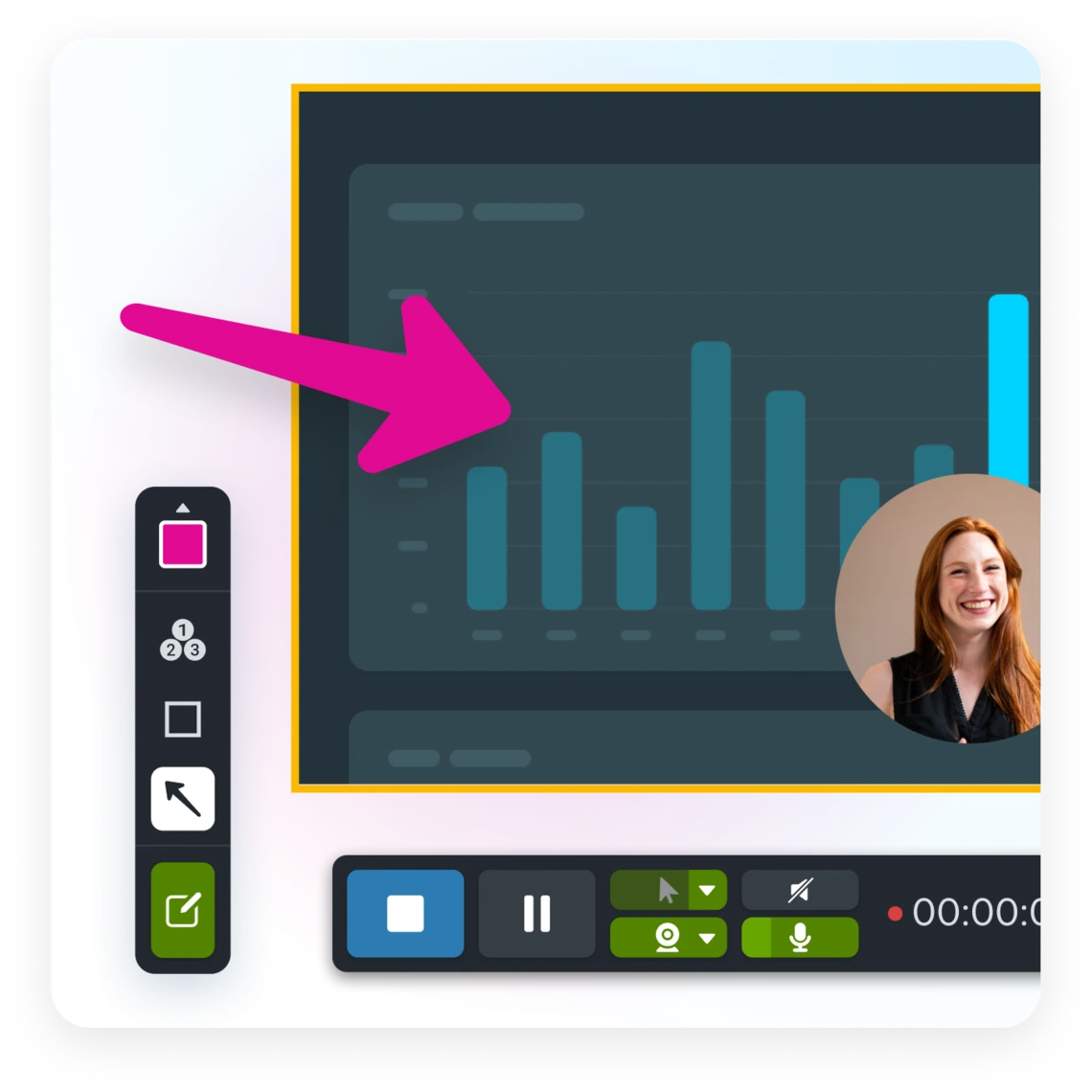As the norm for workplaces continues to shift, teams oriented around one shared space have become less standard. Workplaces have significantly shifted to hybrid models. According to a TechSmith study, 58% of people work hybrid, 31% are always in-office, and 7% are always remote.
The office has evolved from a common space between four walls with easy access to all employees simultaneously, to an uncontained global space spanning multiple timezones.
Having a team distributed in this way can make it difficult to arrange meetings and opportunities for collaboration, but it also holds the benefits of extended operating hours and daily coverage.
For effective communication and collaboration with a distributed team, leaders will need to weigh various communication options and consider both synchronous and asynchronous communication methods.
So, if you’ve ever asked yourself: “What does asynchronous mean,” we’re here to help. And much more.
What is synchronous communication?
In some situations, real-time communication will be your best choice. For example:
- Discussions of sensitive projects or issues
- Providing critical feedback
- Brainstorming or decision-making meetings
- Project kickoffs or other instances where everyone needs to be quickly brought up to speed or a lot of dynamic variables need to be shared
- Rapport needs to be built
- A crisis has happened and immediate attention is required
Synchronous communication can be valuable. A recent study found that 70% of respondents find it valuable to have decision-making meetings in real-time.
Synchronous communication occurs in different ways. For example, face-to-face meetings, phone or video calls, instant messaging, and even coffee break conversations are all synchronous communication methods.

Synchronous communication advantages and disadvantages
Synchronous communication is a natural way of communicating for humans. Because of this, it can have some significant benefits and advantages in the workplace and has been the default form of communication historically.
Activities like brainstorming and solving in-depth problems collaboratively benefit from the ability to speak together, read body language, and give and receive real-time feedback. Similarly, project production time can be maximized.
Although it does feel easier to talk in real time most often, it can be quite disruptive to your focus. When someone pops by your desk the task you were in the middle of can suffer. Unwanted interruptions cost large companies $1 million yearly in lost productivity.

Depending on how spread out your team is, synchronous communication can cause problems with work-life balance and result in burnout because of timezone differences.
The key is for your team to find a balance between synchronous and asynchronous communication. So let’s explore the facets of async communication.
What is asynchronous communication?
Asynchronous communication works best when:
- An immediate answer isn’t necessary
- Collaboration needs to happen with teammates across different time zones
- You want to offer context before or after a real-time event
- A complex concept or task needs to be explained and documented for later reference
- Communication flexibility is beneficial or important to your teammates
- Message’s need to be stored for future reference
Examples of asynchronous communication include emails, project management systems, messaging platforms, and video recordings.

Video messages can come in handy for meetings. Screen recorders like Snagit is a great option for creating quick, effective videos that share an idea or demonstrate a process.
Video messaging is the communication method of the future! According to a TechSmith study, nearly seven in ten respondents use video messaging sometimes or often. Another 22% are open to trying it.
Collaborate with Your Team from Anywhere with Snagit
It’s the easiest way to create and share videos messages that keep your team in the loop without another meeting.
Learn More
Asynchronous communication advantages and disadvantages
Similar to synchronous communication, there are benefits of asynchronous communication methods.
One key advantage of asynchronous communication is the flexibility it offers. The reduction in pressure to respond immediately often results in better responses and happier, less stressed team members.
Asynchronous communication works well for remote teams that cross various time zones. Messages can be delivered and received at the ideal times for each individual involved.
According to the Bureau of Labor Statistics, 16.4% of companies have employees working remotely at least some of the time. That means asynchronous communication is a must!
On the flip side, since there is not an immediate response, it’s not an ideal communication method for quick feedback or if your work is blocked until you get a response. Because of the lag in response times, there can be delays in progress and inefficient use of time.
Asynchronous communication versus synchronous communication, which one is right for your business?
No simple, all-encompassing answer can solve this question. A carefully curated combination of asynchronous communication and synchronous communication will best serve a business. Few workplaces can rely solely on one or the other of these approaches to communication.
Leaders in your workforce need to understand how to weigh both options and select the optimal method for communication in any given situation. It isn’t as black and white as some people believe it to be, and rules like “asynchronous communication is for remote work” and “synchronous communication is for on-site work” leave an awful lot to be desired in their attempts at guidance.
Putting policies and processes in place can be effective in guiding the decision-making process and creating a higher-quality, cohesive work environment.

Who are you communicating with?
Well, like all communication efforts, one of the most important details to consider is who you are communicating with. For this component, considering factors like what generations your team belongs to, the concentration of introverts vs extroverts, and the size of the audience can help you make a great decision.
Gen X team members might prefer a synchronous meeting whereas Millennial and Gen Z staff might respond more positively to a recorded video message. A heavily introverted staff might be more effectively engaged in a brainstorm session completed using asynchronous communication, while an extrovert-leaning group likely prefers the energy involved with synchronous brainstorming sessions.
How urgent is your communication?
Another important consideration in the synchronous vs asynchronous communication debate is related to timing. As the primary difference between the two approaches is in the time between message delivery and response, this could easily be the variable that tips the scales in one direction or the other.
Conversely, having a document passed back and forth with edits via email, a classic asynchronous approach, may be less desirable when you’re on a tight deadline than using a live document, like a Google doc, to edit and revise in real time with your collaborators.
Is complexity a factor?
One more important variable to consider is the complexity of the communication required and both your ability to effectively pass along the nuances and complexities and the receiver’s ability to pick them up using one form or the other, synchronous or asynchronous communication.
For these instances, and many others, there are many excellent tools available to support asynchronous communication.
Video communication is groundbreaking. A recent TechSmith study found that 98% of respondents who use video at work believe it improves the effectiveness of their message.
Tools like Snagit make it simple and streamlined to communicate layers of complex information effectively using visual methods.
Collaborate with your team from anywhere with Snagit
It’s the easiest way to create and share videos messages that keep your team in the loop without another meeting.
Download Free Trial
All in all, each of these areas and likely other situation-specific factors need to be carefully considered when deciding on synchronous or asynchronous communication in the workplace. No one answer will always be right, and there may be some trial and error involved while you learn to navigate this.
Having a strong understanding of the individuals your team is comprised of, and an excellent handle on the details of each project you are working on together, will help you make the best choices for your team’s communication.



Share